Related Research Articles

The Wyandot people are an Indigenous peoples of the Northeastern Woodlands of the present-day United States and Canada. Their Wyandot language belongs to the Iroquoian language family.
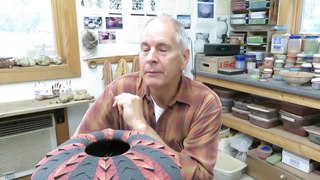
Wyandot is the Iroquoian language traditionally spoken by the people known as Wyandot or Wyandotte, descended from the Tionontati. It is considered a sister to the Wendat language, spoken by descendants of the Huron-Wendat Confederacy. It was last spoken, before its revival, by members located primarily in Oklahoma, United States, and Quebec, Canada. Linguists have traditionally considered Wyandot as a dialect or modern form of Wendat.

The Wyandotte Nation is a federally recognized Native American tribe headquartered in northeastern Oklahoma. They are descendants of the Wendat Confederacy and Native Americans with territory near Georgian Bay and Lake Huron. Under pressure from Haudenosaunee and other tribes, then from European settlers and the United States government, the tribe gradually moved south and west to Michigan, Ohio, Kansas, and finally Oklahoma in the United States.

Philbrook Museum of Art is an art museum with expansive formal gardens located in Tulsa, Oklahoma. The museum, which opened in 1939, is located in a former 1920s villa, "Villa Philbrook", the home of Oklahoma oil pioneer Waite Phillips and his wife Genevieve. Showcasing nine collections of art from all over the world, and spanning various artistic media and styles, the cornerstone collection focuses on Native American art featuring basketry, pottery, paintings and jewelry.

Maria Poveka Montoya Martinez was a Puebloan artist who created internationally known pottery. Martinez, her husband Julian, and other family members, including her son Popovi Da, examined traditional Pueblo pottery styles and techniques to create pieces which reflect the Pueblo people's legacy of fine artwork and crafts. The works of Maria Martinez, and especially her black ware pottery, are in the collections of many museums, including the Smithsonian, the Metropolitan Museum of Art, the Denver Art Museum, and more. The Penn Museum in Philadelphia holds eight vessels – three plates and five jars – signed either "Marie" or "Marie & Julian".

Eliza Burton "Lyda" Conley was a Wyandot Native American and an American lawyer. She was the first woman admitted to the Kansas Bar Association. She was notable for her campaign to prevent the sale and development of the Huron Cemetery in Kansas City, now known as the Wyandot National Burying Ground. She challenged the government in court, and in 1909 she was the first Native American woman admitted to argue a case before the Supreme Court of the United States.
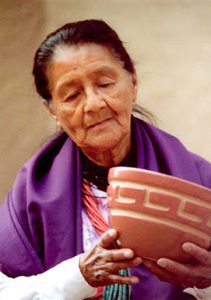
Maria Margarita "Margaret" Tafoya was the matriarch of Santa Clara Pueblo potters. She was a recipient of a 1984 National Heritage Fellowship awarded by the National Endowment for the Arts, which is the United States government's highest honor in the folk and traditional arts.
Marie Zieu Chino (1907–1982) was a Native American potter from Acoma Pueblo, New Mexico. Marie and her friends Lucy M. Lewis and Jessie Garcia are recognized as the three most important Acoma potters during the 1950s. Along with Juana Leno, they have been called "The Four Matriarchs" who "revived the ancient style of Acoma pottery." The inspiration for many designs used on their pottery were found on old potsherds gathered to use for temper. Together they led the revival of ancient pottery forms including the Mimbres, Tularosa and other various cultures in the Anasazi region. This revival spread to other potters who also accepted the old styles, which led to new innovative designs and variations of style and form.
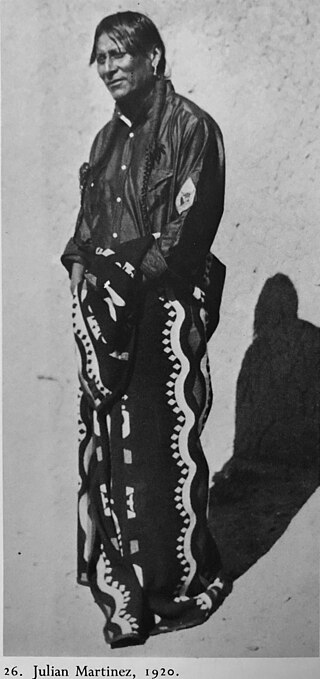
Julián Martínez, also known as Pocano (1879–1943), was a San Ildefonso Pueblo potter, painter, and the patriarch of a family of Native American ceramic artists in the United States.
Walter Richard West Sr., was a painter, sculptor, and educator. He led the Art Department at Bacone College from 1947 to 1970. He later taught at Haskell Institute for several years. West was an enrolled citizen of the Cheyenne and Arapaho Tribes.

Harrison Begay, also known as Haashké yah Níyá was a renowned Diné (Navajo) painter, printmaker, and illustrator. Begay specialized in watercolors, gouache, and silkscreen prints. At the time of his death in 2012, he was the last living, former student of Dorothy Dunn and Geronima C. Montoya at the Santa Fe Indian School. His work has won multiple awards and is exhibited in museums and private collections worldwide and he was among the most famous Diné artists of his generation.

Art of the American Southwest is the visual arts of the Southwestern United States. This region encompasses Arizona, New Mexico, and parts of California, Colorado, Nevada, Texas, and Utah. These arts include architecture, ceramics, drawing, filmmaking, painting, photography, sculpture, printmaking, and other media, ranging from the ancient past to the contemporary arts of the present day.
Jody Naranjo is a contemporary Tewa pottery maker from the Santa Clara Pueblo, New Mexico in the United States. She comes from a family of traditional Tewa potters. She learned the craft of pottery from her mother, Dolly Naranjo, and other female relatives. She attended the Institute of American Indian Arts. Naranjo was selling her artwork at age fifteen at the New Mexico History Museum. Her style is identifiable and showcases her keen sense of humour. Jody has 3 daughters and maintains her connections to her heritage and friends. She is represented by Blue Rain Gallery in Santa Fe.
Anita Fields is an Osage/Muscogee Native American ceramic and textile artist based in Oklahoma. She is an enrolled citizen of the Osage Nation.
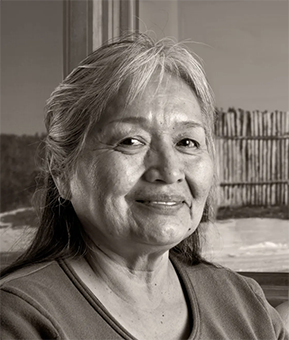
Christine McHorse, also known as Christine Nofchissey McHorse, was a Navajo ceramic artist from Santa Fe, New Mexico.
Susan Folwell is a Native American artist from Santa Clara Pueblo, New Mexico, known for her work in the ceramic industry. Her work ties in Native designs and history and has been used by Folwell to demonstrate her viewpoints on society and politics. Folwell has been described by the Heard Museum as an "innovator in Pueblo pottery".
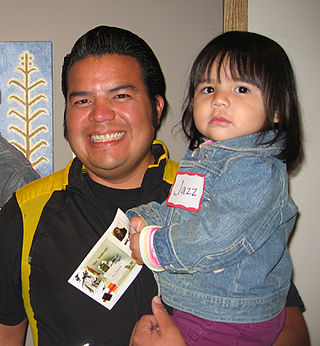
Jason Garcia is a contemporary Native American artist in the United States, who was born in Santa Clara, New Mexico. His work has been exhibited the Smithsonian in Washington D.C, the Heard Museum in Phoenix, the Palm Springs Art Museum, and many more. He won the 2018 Mentor Fellowship Award under the Native Arts and Cultures Foundation amongst many others.

Waldo Mootzka (1903–1940) was a Hopi watercolor artist.
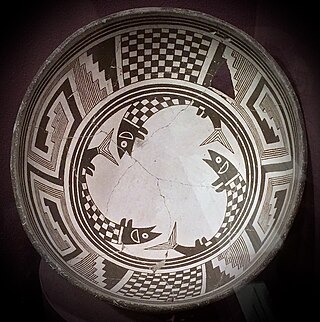
Pueblo pottery are ceramic objects made by the Indigenous Pueblo people and their antecedents, the Ancestral Puebloans and Mogollon cultures in the Southwestern United States and Northern Mexico. For centuries, pottery has been central to pueblo life as a feature of ceremonial and utilitarian usage. The clay is locally sourced, most frequently handmade, and fired traditionally in an earthen pit. These items take the form of storage jars, canteens, serving bowls, seed jars, and ladles. Some utility wares were undecorated except from simple corrugations or marks made with a stick or fingernail, however many examples for centuries were painted with abstract or representational motifs. Some pueblos made effigy vessels, fetishes or figurines. During modern times, pueblo pottery was produced specifically as an art form to serve an economic function. This role is not dissimilar to prehistoric times when pottery was traded throughout the Southwest, and in historic times after contact with the Spanish colonialists.
References
- ↑ "Hear Our Voices with Richard Zane Smith". Museum of Native American History. Bentonville, AR. Archived from the original on February 21, 2023. Retrieved 7 August 2023.
- ↑ "Richard Zane Smith #020417 • Native American Collections". Native American Collections. Retrieved 2020-02-18.
- ↑ "Troubled tonguesSome Indian languages in Oklahoma are among those on an endangered list". Oklahoman.com. 2007-09-19. Retrieved 2020-02-18.
- ↑ Warren, Stephen (1970). The Eastern Shawnee Tribe of Oklahoma: Resilience through adversity. University of Oklahoma Press. ISBN 978-0-8061-6101-3. OCLC 1004564496.
- ↑ "Zane Smith, Richard (b. 1955) Archives - King Galleries" . Retrieved 2020-02-18.
- ↑ Strong, David M. Jacka, Jerry D. (1989), Beyond Tradition: Contemporary Indian art and its evolution, Jacka Photography, OCLC 932071717
{{citation}}: CS1 maint: multiple names: authors list (link) - ↑ Cohen, Lee (1993). Art of Clay: Timeless Pottery of the Southwest. Clear Light Publishers. ISBN 0-940666-19-7. OCLC 1108717290.
- ↑ "An Art Museum for the University of Iowa". Art Journal. 29 (1): 48–50. 1969. doi:10.2307/775280. ISSN 0004-3249. JSTOR 775280.
- ↑ "Richard Zane Smith (OK)". THE LAST DROP: INTOXICATING POTTERY, PAST AND PRESENT. Retrieved 2020-03-03.
- ↑ "NATIVE AMERICAN – Collections – Philbrook Museum of Art". philbrook.emuseum.com. Retrieved 2020-02-18.
- ↑ Heard Museum. (2002). Masterworks from the Heard Museum. Heard Museum. ISBN 0-934351-67-8. OCLC 49900447.
- ↑ "Richard Zane Smith's Artwork". www.wyandot.org. Retrieved 2020-02-18.
- ↑ "Richard Zane Smith". First Peoples Fund. Retrieved 2020-02-18.